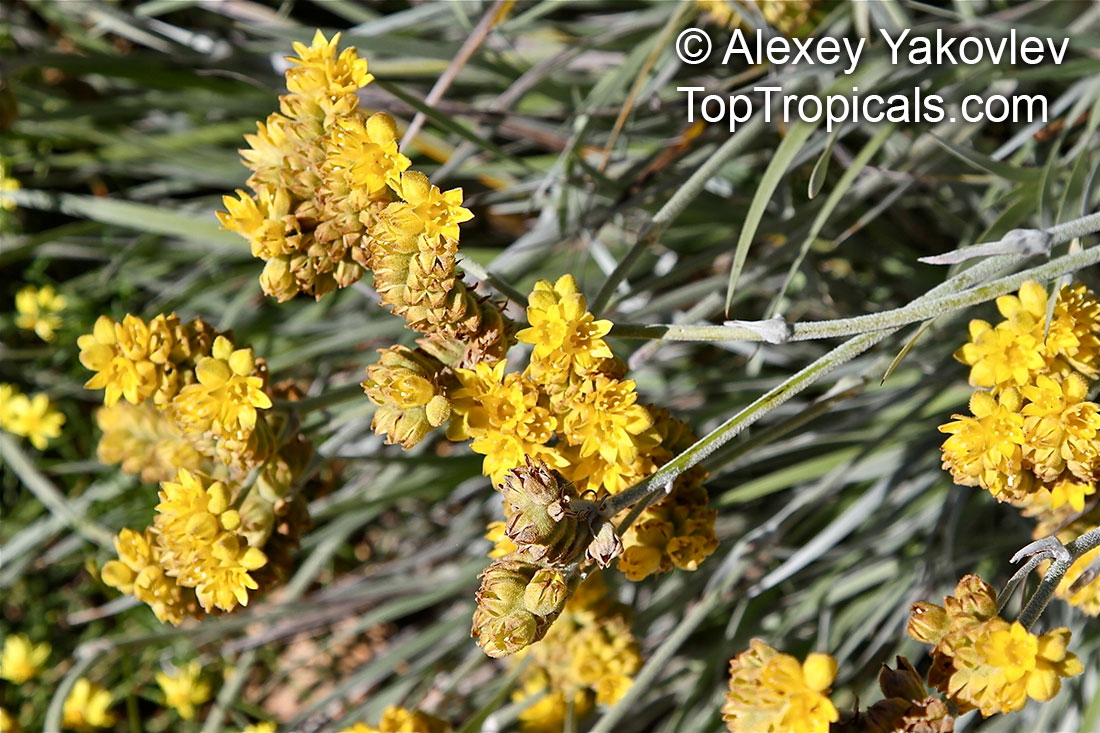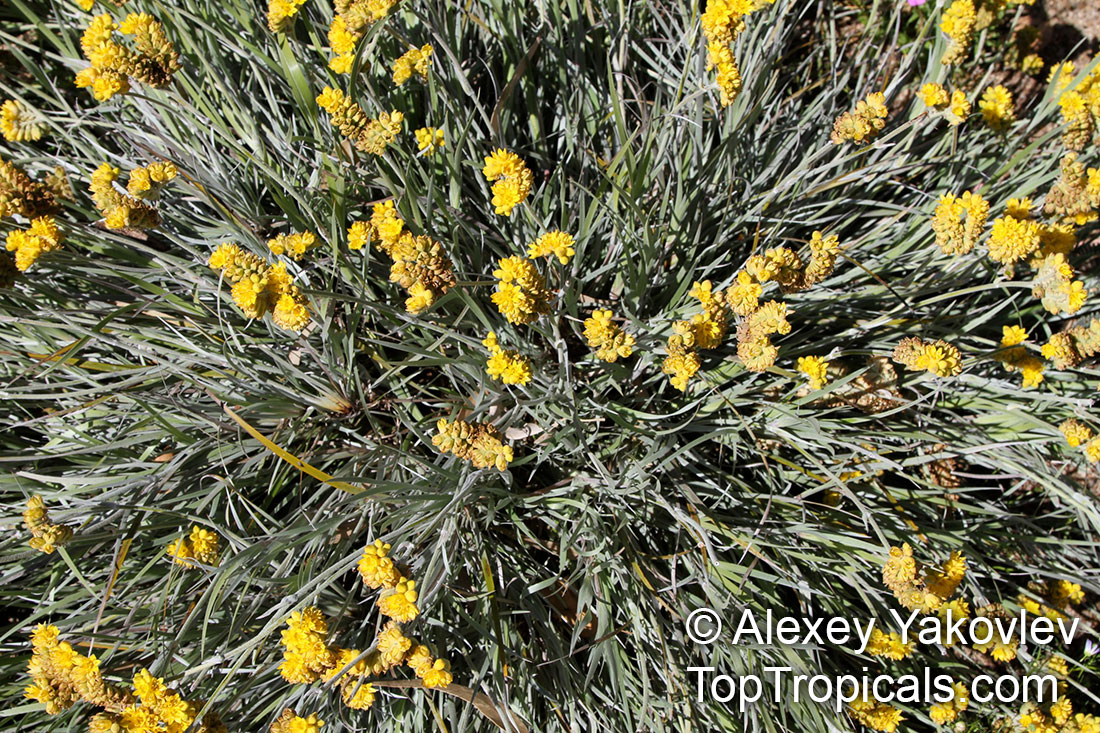Conostylis candicans (Grey Cottonhead)
Top Tropicals Plant Encyclopedia
Botanical name: Conostylis candicans
Common name: Grey Cottonhead
Family: Haemodoraceae
Origin: Australia






This low-growing woody shrub is native to Australia and only reaches aheight of 2ft.
It easily tolerates full sun and moderate water, providing a unique contrast among flower beds, with its small evergreen mounds and grass-like foliage. It is recommended to be spaced 12-18in apart or planted in wide swaths. Conostylis candicans produces bell-shaped yellow flowers, which bloom in late winter through spring. These small vibrant blooms can attract butteflies and hummingbirds, adding a cheerful touch to any garden.
Despite being native to Australia, the Conostylis candicans can also be grown in USDA Zones 9-11. In cold climates and cold weathers, it is recommended to grow them in pots and move them indoor during severe weather. Plant in well-draining soil to ensure the longevity of the plants. Consistent watering is necessary during summer months, but make sure to avoid overwatering. Variety of rich soil mixes are available for purchase that are designed specifically for cacti, succulents and tropical plants, making sure the soil drains well. Though Conostylis candicans is easy to grow, it should still be planted in a sunny part of the garden where enough air and breeze is available.
Overall, Conostylis candicans is a low-maintenance and attractive groundcover, with its small evergreen mounds and bright yellow and orange flowers. Its low-growing habit makes it perfect for edging, spilling over rock walls, or cascading down slopes. When planted in full sun and well-draining soil, this small shrub (2-5ft) can bring an abundance of pop to any garden.

